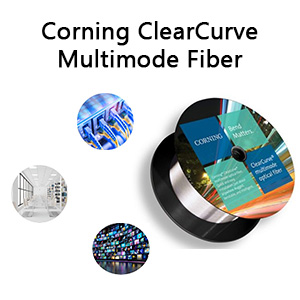
Choosing between the many cable and connection options can be frustrating. The classification and rating of copper network cables is complex enough, but choosing fiber optic cables can be even more daunting. This article will help you understand how to choose the right fiber optic cable.
First, let’s be clear about the wide range of uses of fiber optic cables in a variety of applications, from small office LANs to data centers to intercontinental communication links. For example, the information line connecting North America and Europe is built through undersea fiber optic cables. This article will focus on those types of cables that are commonly found in home networks, especially those pre-terminated cables designed for installation. These are sometimes called “jumpers,” “pre-terminated,” or similar nicknames, such as fiber optic patch cords. There are several parameters you should be clear about before purchasing.
Multimode vs. Singlemode
The first thing to determine when choosing a fiber optic cable is the “mode” you need. The mode of an optical fiber describes how the light beam propagates inside the fiber. This is important because the two modes are not compatible, meaning you can’t just replace them at will.
For single-mode patch cords, the choice is relatively simple, but for multimode patch cords, the choices are more diverse. You may see different types such as OM1, OM2, OM3, and OM4 (OM stands for “optical mode”). These different types of fiber have different performance in terms of speed, bandwidth, and transmission distance, and you should choose the most appropriate type based on the hardware equipment and other fibers it connects to.
Fiber Optic Cable Jacket
Pre-terminated fiber can be used in a variety of installation environments, so different jacket materials may be required. The standard jacket type is OFNR, which means “fiber non-conductive rise”, which simply means that it does not contain metal and will not conduct stray currents, making it suitable for rise applications between floors. In addition, there are OFNP or full-layer jacket patch cords, which are ideal for use in full-layer environments, such as suspended ceilings or raised floors. Many data centers and server rooms require full-layer cables, and local fire codes usually have the final say on the type of jacket required. The final choice of jacket is LSZH, which means “low-smoke zero halogen”, which is a jacket made of a special compound that produces almost no smoke when burned and does not contain toxic halogen compounds. Again, before making a jacket selection, please check with local fire codes to ensure that the installation requirements are met.
Single Fiber vs. Dual Fiber
The difference between single fiber and dual fiber is one fiber vs. two fibers, and one or two connectors on each end of the cable. Dual fiber patch cords are the most common type, as most fiber optic equipment works in a way that requires two fibers to communicate. One is used to transmit data signals, and the other is used to receive signals. However, in some applications, only one fiber may be needed, so a single fiber patch cord may be necessary in specific situations. If you are unsure, you can safely choose a dual fiber patch cord and use only one of the fibers.
Fiber Optic Cable Connectors
Remember the copper cable we mentioned earlier? Regardless of which grade of twisted pair you are dealing with (Cat 5, 5e, etc.), you know that the end of the cable will be an 8-position modular RJ-45 plug. However, with fiber optic patch cords, the connector options are more diverse. Common connector types include FC, LC, SC, ST, and MTRJ.
These are the most common choices you will make when choosing a patch cord. If you can determine which features you need, you will most likely make the right choice when customizing a fiber optic cable with the appropriate parameters.










